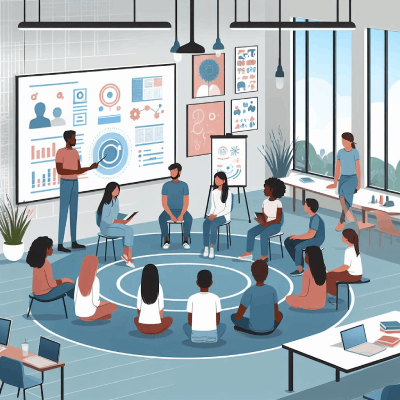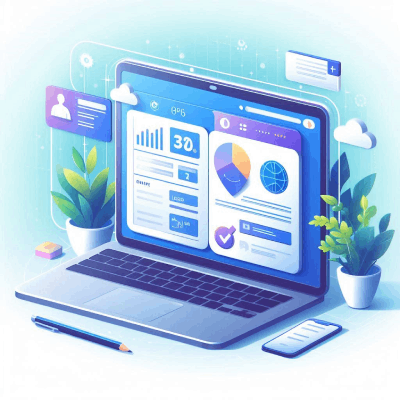Como navegar no WP2 Toolkit – De Ferramentas a Personas
O WP2 do projeto Diverse Courses
visa apoiar a conceção de formação inclusiva e centrada no ser humano através
de um percurso estruturado de documentação, experimentação e orientação
prática. Cada documento produzido no âmbito do WP2 está interligado e contribui
para um fluxo de trabalho progressivo e coerente, desde a identificação das
boas práticas existentes até à criação de Personas acionáveis para aprendentes
e educadores.
Um caminho coerente: da inspiração à aplicação
A jornada começa com WP2.1 – A Coleção de Boas Práticas,
onde cada parceiro reuniu e descreveu pelo menos três métodos, ferramentas ou
procedimentos existentes que ajudam a traçar o perfil de alunos e educadores.
Estas práticas foram selecionadas com base na sua eficácia na recolha de dados
úteis sobre as necessidades, competências, atitudes e barreiras de aprendizagem
dos participantes. As práticas abrangeram uma variedade de campos – da
prontidão digital à inclusão de género – e vieram de experiências educacionais
reais em diferentes contextos nacionais.
Partindo desta base, os parceiros mudaram para o WP2.3 –
The Piloting of Profiling Tools, onde as boas práticas não foram
simplesmente relatadas, mas ativamente testadas em diversos cursos de educação
de adultos. Cada parceiro selecionou práticas relevantes da coleção e
adaptou-as em ferramentas de definição de perfis adaptadas ao seu grupo-alvo
específico. Os resultados desta fase de experimentação foram documentados, com
insights sobre barreiras, sucessos e lições aprendidas.
Estas experiências foram então sintetizadas em WP2.10 –
The Manual: Diversity Course Mapping Tool. Este recurso abrangente
documenta não só a experimentação do WP2.3, mas também ilustra as razões
conceptuais e pedagógicas para a utilização de ferramentas de definição de
perfis. O Manual apresenta como as ferramentas-piloto foram utilizadas em
contextos educativos reais, o seu impacto e como apoiam uma melhor compreensão
da diversidade na sala de aula. Também conecta essas ferramentas à próxima
fase: a construção de Personas.
Finalmente, WP2.12 – The Personas Tutorial: A
Step-by-Step Guide traduz todas as experiências anteriores em um método
acionável. Ele explica como recolher, analisar e agrupar dados de aprendentes e
educadores para gerar Personas ricas e baseadas em narrativas. Esses
personagens semifictícios incorporam tipos reais de aprendentes e ajudam os
educadores a projetar ambientes de aprendizagem mais responsivos, empáticos e
eficazes.
Lista de ferramentas disponíveis para criação de perfis
& desenvolvimento de persona
Abaixo está uma seleção categorizada de ferramentas da Coleção
A2.3 de Ferramentas de Mapeamento de Curso, conforme referenciado no Manual
e no Tutorial. Estas ferramentas são concebidas para dois fins principais:
Ferramentas para criar perfis de alunos
|
Nome da ferramenta
|
Público-alvo
|
Áreas de foco
|
|
ProfilPass em Cidadania Digital
|
Aprendentes adultos (baixas competências digitais)
|
Motivação, autoavaliação, mapeamento de competências
|
|
Motivação e Análise de Necessidade (Mentimeter)
|
Alunos online (curso de inglês)
|
Objetivos de aprendizagem, preferências digitais, atitudes
|
|
Ferramenta de Mapeamento de Competências Básicas de Vida
|
Migrantes, NEET
|
Condições de vida, obstáculos, aspirações
|
|
Perfil do aluno NEE
|
Alunos com necessidades especiais
|
Necessidades de apoio, estilos de aprendizagem
|
|
Criador de Perfil de Persona da Sala de Aula
|
Grupos mistos de adultos
|
Dados demográficos, objetivos, restrições
|
|
Questionário de Atitudes Ambientais
|
Estudantes de Serviço Social
|
Atitudes, consciência
|
|
Perfil adaptativo do aluno
|
Alunos em geral
|
Competências digitais, comportamentos de aprendizagem
|
|
"Como está o seu inglês?"
|
Estudantes de línguas
|
Autoavaliação, confiança, exposição
|
|
Ferramenta de mapeamento de cuidadores de prata
|
Alunos idosos
|
Motivação para a aprendizagem, ambiente de cuidados
|
|
Ferramenta de Treinamento Transformador
|
Alunos da comunidade
|
História pessoal, valores
|
|
Questionário de Atitudes em Inglês
|
Estudantes de línguas
|
Fatores emocionais e motivacionais
|
Ferramentas para criar perfis de educadores
|
Nome da ferramenta
|
Público-alvo
|
Áreas de foco
|
|
Mapeamento Curricular Colaborativo
|
Formadores de educação de adultos
|
Estratégias de ensino, disponibilidade de tempo e análise
de sobreposição
|
|
Mulheres inspiradoras em STEM
|
Treinadoras
|
Motivações, barreiras de género
|
|
Personas do Educador em Classes de Habilidade Mista
|
Professores de Escolas de Segunda Oportunidade
|
Abordagens inclusivas, preparação digital
|
Ferramentas para Desenvolvimento de Personas
Essas ferramentas servem tanto para a entrada de dados
quanto para o processo de
transformação para a construção de Personas. Eles devem ser usados em
combinação com o Personas Tutorial.
- Questionários
Iniciais (demográficos + motivação)
- Entrevistas
semiestruturadas (incluídas em muitos anexos de ferramentas)
- Grupos focais e Grelhas de Observação
- Modelos
de formulário do Google (para SEN e perfis do Google Sala de aula)
- Modelos
de Clustering (no Personas Tutorial)
- Canvas (mapeamento de constrangimentos institucionais e sociais)

